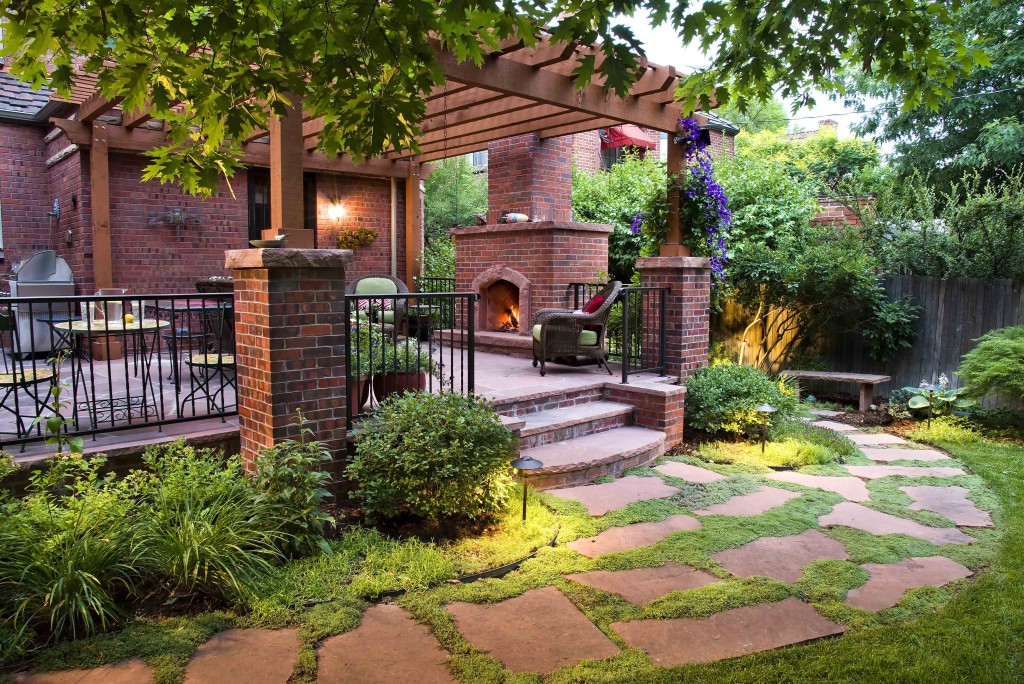About Hilton Head Landscapes
Table of ContentsThe Ultimate Guide To Hilton Head LandscapesIndicators on Hilton Head Landscapes You Need To KnowThe Basic Principles Of Hilton Head Landscapes The 20-Second Trick For Hilton Head LandscapesMore About Hilton Head LandscapesThe Best Strategy To Use For Hilton Head LandscapesHow Hilton Head Landscapes can Save You Time, Stress, and Money.
Line creates all forms and patterns and can be made use of in a variety of methods in the landscape. Line in the landscape is produced by the side between two materials, the rundown or shape of a type, or a lengthy linear attribute. Lines are a powerful tool for the designer due to the fact that they can be made use of to create an unlimited variety of shapes and types, and they manage motion of the eye and the body.

Lines can have several qualities, such as those described listed below, yet they usually serve various purposes. Number 1. Lines in the landscape - Landscaping bluffton sc. The residential properties of lines determine just how people react to the landscape, both psychologically and literally. Straight lines are architectural and strong; they create an official character, are typically connected with a balanced style, and lead the eye straight to a prime focus.
The smart Trick of Hilton Head Landscapes That Nobody is Talking About
Straight lines are most usually found in hardscape sides and product. Bent lines create an informal, natural, relaxed character that is associated much more with nature and asymmetrical balance. Bent lines relocate the eye at a slower rate and include mystery to the space by developing surprise views. Upright lines move the eye up, making an area feel larger.
Vertical lines in the landscape include high, slim plant material, such as trees, or tall structures, such as an arbor or a bird home on a post. Horizontal lines relocate the eye along the ground airplane and can make a space really feel larger. Low lines are much more controlled and create a sensation of rest or repose.
The Ultimate Guide To Hilton Head Landscapes
Low lines are produced by low yard walls, sidewalks, and short hedges. Lines are used to draw kinds on a plan. In strategy view, they define plant beds and hardscape areas. Lines are additionally produced by the vertical kinds of developed attributes and plant material. There are 3 key line types that develop form in the landscape: bedlines, hardscape lines, and plant lines.
Bedlines link plant product to the home and hardscape due to the fact that the eye adheres to the line, relocating the gaze with the landscape. Hardscape lines are produced by the edge of the hardscape, which delineates the constructed framework. Line can also be produced by long and slim materials, such as a fencing or wall.
Some Known Questions About Hilton Head Landscapes.
Form is found in both hardscape and plants, and it is commonly the leading visual aspect that spatially arranges the landscape and usually identifies the design of the garden. The form of structures, plant beds, and garden ornaments additionally identifies the overall form style of the garden. Official, geometric forms include circles, squares, and polygons.
Plants produce type in the garden through their lays out or silhouettes, but type can likewise be specified by a space or negative room between plants - landscapers hilton head island (https://yoomark.com/content/family-owned-and-operated-hilton-head-landscapes-has-been-serving-beaufort-county-over). Circles can be complete circles, or they can be divided right into fifty percent circles or circle sectors informative post and combined with lines to produce arcs and tangents
An Unbiased View of Hilton Head Landscapes
Circles are a solid layout form since the eye is always drawn to the center, which can be used to emphasize a focal point or link various other types. Circular forms in hardscape and grass panels.
The square kind can likewise be fractional and pre-owned consistently to produce a grid pattern. Unlike circles, squares are more powerful on the sides, which can be lined up or overlapped to develop unique patterns and more complex forms.
Meandering lines usually simulate the all-natural course of rivers or streams and can be called smooth lines with deeply bent undulations. Twisting lines (Figure 3) work well for paths, plant bedlines, and completely dry stream beds. Meandering lines can add interest and mystery to a garden by leading audiences around corners to find brand-new views and spaces.
Some Known Facts About Hilton Head Landscapes.

Figure 5. Fragmented edges: tipping stones in pathway. Type is one of the most enduring high quality of a plant (bluffton landscaping). https://hub.docker.com/u/h1tnhdlndscps. Common plant types are well established and standardized, as form is one of the most constant and well-known quality of plants. Type can also be developed through the massing of plants, where the overall mass develops a various form than a specific plant.
An extremely different kind must be utilized with careone or more work well as a focal point, yet way too many produce mayhem. All-natural plant forms, as opposed to over-trimmed types, need to establish the bulk of the structure. The relevance of general type is basically dependent on the seeing perspectivethe kind of a tree can show up rather various to a person standing under the cover versus watching the tree from a range in an open field.
Not known Incorrect Statements About Hilton Head Landscapes
Plant types also create and specify the gap or open spaces in between the plants, creating either convex or concave forms in the spaces. High-arching tree branches usually produce a concave open area under the branches, and a round canopy with reduced branches loads the space to create a convex form outdoors room under the tree.
